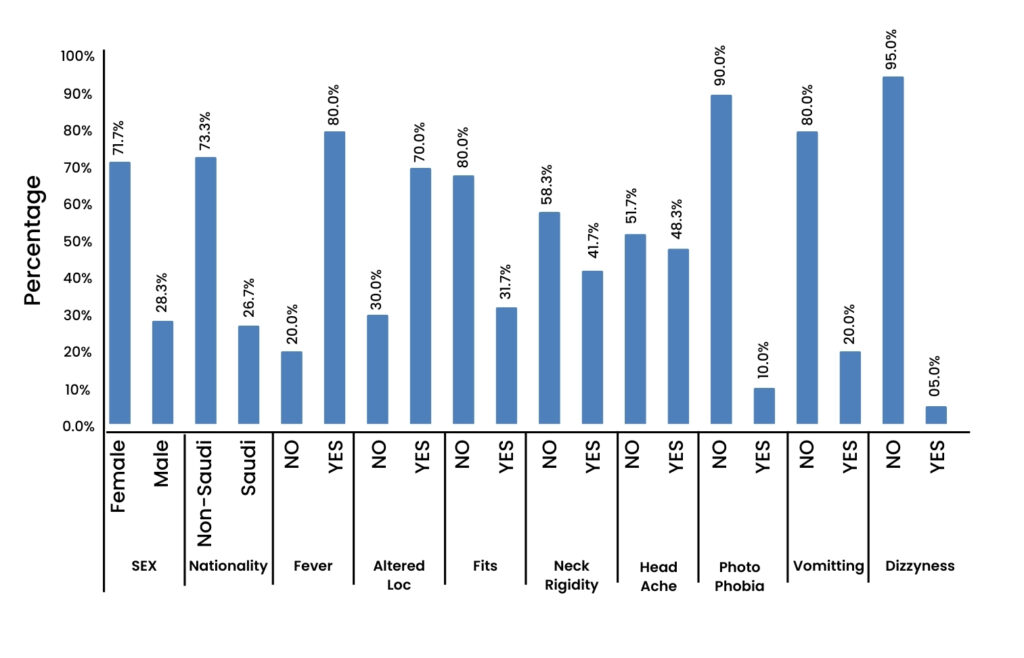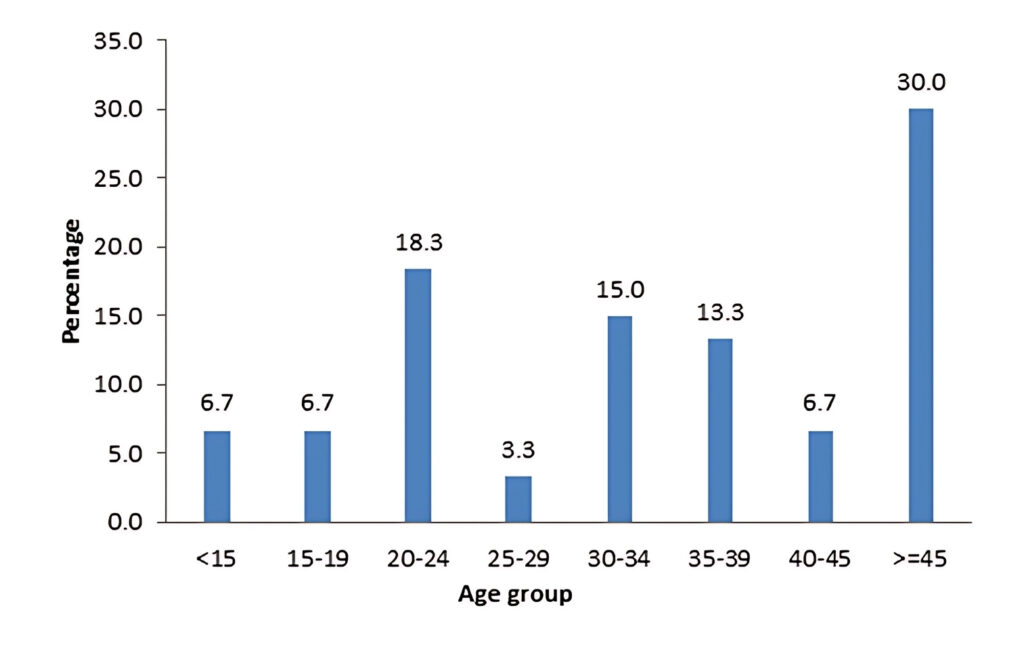- \ Service
- \ Samples
Clinical Presentation and Outcomes of Bacterial Meningitis in University Hospital
Subject Area: Education / Adult Learning / Biostatistics
Modified: 19th August 2025
Prices from
£ 149
Rated 4.4/5
- View a Different Grade
- Cite This
- Plagiarism Report
Biostatistics Results
Table Of Content
Referencing Tools
- Harvard Referencing Tool
- Vancouver Referencing Tool
- APA Referencing Tool
S. No
Contents
Page
1
Symptoms of patients with meningitis
2
2
Laboratory characteristics of meningitis patients
3
3
Treatments administered to meningitis patients
6
4
Complications associated with meningitis
7
5
Binary logistic regression predicting meningitis diagnosis via CT scan findings
7
6
Binary logistic regression for predicting meningitis via CSF culture findings
7
7
Binary logistic regression for predicting meningitis via MRI findings
7
Symptoms of patients with meningitis
Symptoms | Number patients | Percent (%) |
Fever | 48 | (80.0) |
Headache | 29 | (48.3) |
Vomiting | 12 | (20.0) |
Altered mental status | 42 | (70.0) |
Neck rigidity | 25 | (41.7) |
Photo phobia | 6 | (10.0) |
Dizzyness | 3 | (5.0) |
Fits | 19 | (31.7) |

Get Help With Your Proposal
Laboratory characteristics of meningitis patients
Laboratory | Mean(SD) |
CSF-WBC | 3.41(2.16) |
CSF -RBC | 3.95 (2.49) |
CSF-GLU | 3.91(2.60) |
CSF-PROT | 1.30(1.03) |
Laboratory results showed a mean CSF WBC count of 3.41 ± 2.16, CSF RBC count of 3.95 ± 2.49, CSF glucose levels of 3.91 ± 2.60, and CSF protein levels of 1.30 ± 1.03.

Treatments administered to meningitis patients
Treatments | Number of patients (%) |
TB on Admission | 8(13.3) |
Ceftrixone on admission | 53(88.3) |
Vancomicin on admission | 52(86.7) |
Acyxlovir on admission | 35(58.3) |
Change of antibiotics after 24 hours | 13(21.7) |
Complications associated with meningitis
Complication | Number of patients (%) |
Stroke | 5(8.3) |
Cranial nerve palsy | 2(3.3) |
Hydrocephalous | 2(3.3) |
Binary logistic regression predicting meningitis diagnosis via CT scan findings
Risk factors | Odds Ratio( C.I Lower- Upper) | P-Value |
Fever | 1.200(0.316-4.560) | 0.789 |
Altered level of consciousness | 2.625(0.739-9.330) | 0.136 |
fits | 0.504(0.153-1.666) | 0.261 |
Neck rigidity | 0.519(0.173-1.558) | 0.242 |
Headache | 0.463(0.157-1.360) | 0.161 |
Photophobia | 0.314(0.034-2.881) | 0.306 |
Vomiting | 0.509(0.122-2.124) | 0.354 |
Dizzyness | 3.700(0.316-43.365) | 0.297 |
Dependent variable: Brain CT scan
Table 5 presents the unadjusted odds ratios for risk factors associated with meningitis, as identified by CT scan findings. No significant association was found (p > 0.05) with CT scan results and/or symptoms.
Binary logistic regression for predicting meningitis via CSF culture findings
Risk factors | Odds Ratio( C.I Lower- Upper) | P-Value |
Fever | 0.478(0.040-5.762) | 0.561 |
fits | 1.083(0.092-12.738) | 0.949 |
Neck rigidity | 0.688(0.059-8.026) | 0.765 |
Headache | 0.518(0.044-6.037) | 0.599 |
Similarly, Table 6 shows the unadjusted odds ratios for selected risk factors associated with CSF culture results. Again, no significant association (p > 0.05) was observed between CSF culture findings and symptoms.
Binary logistic regression for predicting meningitis via MRI findings
| Risk factors | Odds Ratio( C.I Lower- Upper) | P-Value |
| Fever | 0.462(0.114-1.876) | 0.280 |
| Altered level of consciousness | 0.955(0.252-3.622) | 0.945 |
| fits | 1.473(0.409-5.300) | 0.553 |
| Neck rigidity | 0.844(0.240-2.969) | 0.791 |
| Headache | 1.326(0.387-4.544) | 0.654 |
| Vomiting | 0.273(0.032-2.339) | 0.236 |
| Dizzyness | 8.364(0.694-100.771) | 0.094 |
Table 7 displays unadjusted odds ratios for the risk factors associated with MRI results in meningitis patients.

